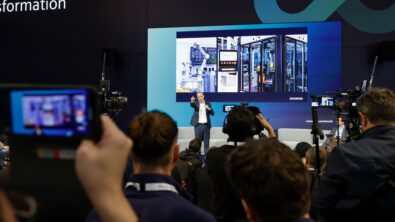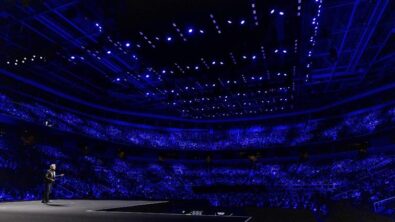Epic Student Challenges
Last week – thanks to our friends at Principia College – I took my son to hear Apollo 13’s Captain James Lovell, Fred Haise and Mission Flight Control Director Gene Kranz. It was amazing to hear these three legends. They shared more than the epic challenges they faced during Apollo 13. They gave their histories and with them the beginning of NASA, and the Mercury, Gemini and Apollo programs.
Gene noted that the computers during the Apollo missions had 1/10th a megabyte of memory capacity. He said their communications during the Mercury missions were more like the Pony Express. They talked about the pros and cons of a very young workforce. It was a challenge for that young workforce to come to grips with the death of the Apollo 1 astronauts. Yet the incident created “a sense of urgency and dedication” in all of them to do all their work in the honor of those astronauts and President John F. Kennedy who had challenged them to go to the moon.

Their candor and humor kept students and adults in the audience engaged. Even though we knew they survived, it was hard not to get caught up in the story as they told about each challenge and how their chances of survival kept getting smaller. Apparently it was Hollywood and not Gene who said failure is not an option. Gene said his words were “this crew is coming home.”
Jim noted that crises don’t bother him anymore and gave students the advice to “never give up” and have a “positive attitude.” When asked what advice to give a future engineer, Fred said simply “you’re interested in the right profession.”
Principia announced at the event that they are adding an engineering program. This liberal arts school has been doing amazing engineering without a formal program. They faced some epic challenges in a solar car race this summer that we’ll tell you more about in the near future.
The Apollo 13 presentation reminded me of the epic student challenges NASA’s Charlie Camarda and Boeing’s Michael Richey shared recently at our analyst event. In many ways they are working to cultivate what the Apollo team noted was happening through those early NASA programs. Here are Charlie and Michael with Bill Boswell behind the world’s largest largest 3D printed unmanned aerial vehicle (UAV):

Charlie was one of the astronauts on STS-114, the “Return to Flight” Space Shuttle mission.
In his introduction to Charlie, Bill asked “Can you imagine what it must have been like to be on that first mission to return to space after the Columbia disaster?”
Prior to the mission, Charlie worked with colleagues to address that epic disaster. The solution took creativity and thinking outside the box. Those are skills Charlie is working to make stronger in future engineers through his work with the next generation. Learn more in this video interview:
https://www.youtube.com/watch?v=foWb4U5WztE
Some of my favorite quotes from Charlie’s presentation:
“How do we motivate and sustain and inspire the next generation of engineers and scientists.”
We must “transform the way we educate the next generation to keep them totally engaged…with problem based active learning.”
We need to “infuse in the curriculum more emphasis on innovation and creativity.”
“I would tell students to go into engineering because engineering … is trying to discover and conceive things no one has ever thought of.”
Charlie and NASA are working with companies like Boeing and Siemens to provide students with projects to do just that. Learn more about the unmanned aerial vehicle challenges Boeing has organized:
https://www.youtube.com/watch?v=2iJbPbZI8Oo
Michael noted:
“So an epic challenge – based in a project that had a timeline, customer, budgetary constraints, students felt like they were contributing to the social good, which is really inspiring for the students.”
“This year we’re challenging the students with the first responder model … it anchors a real-world social problem with systems engineering contextual model. Enables students to collaborate and optimize that solution space. And this exactly what we need our engineers doing when they come into the Boeing company.
“This isn’t the old model of engineering…this is high tech low touch global, a very interesting field to be in right now.”
Michael also shared how these challenges are “moving away from the sage on the stage, to the guide on the side” to help students learn more effectively.
While the video interviews above provide some of the key highlights, I encourage you to watch the full presentation. It’s just an hour and will give you a good overview of what the aerospace industry is doing to train the next generation.
Desktop Engineering recently interviewed Michael to share a little more about about these epic challenges and the Boeing AerosPACE program. Also Inside Higher Ed also featured more on the AerosPACE program recently in Taking Off.
It is clear that industry is collaborating with academia in very unique ways that will create more creative and effective future engineers.
– Dora


